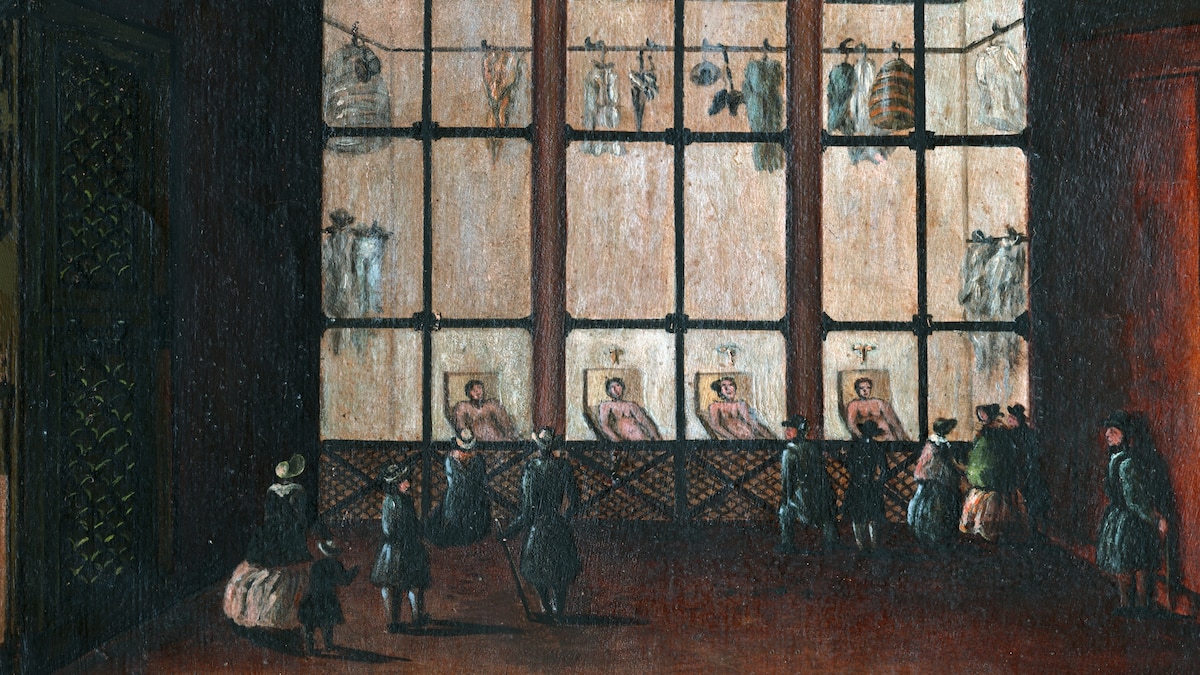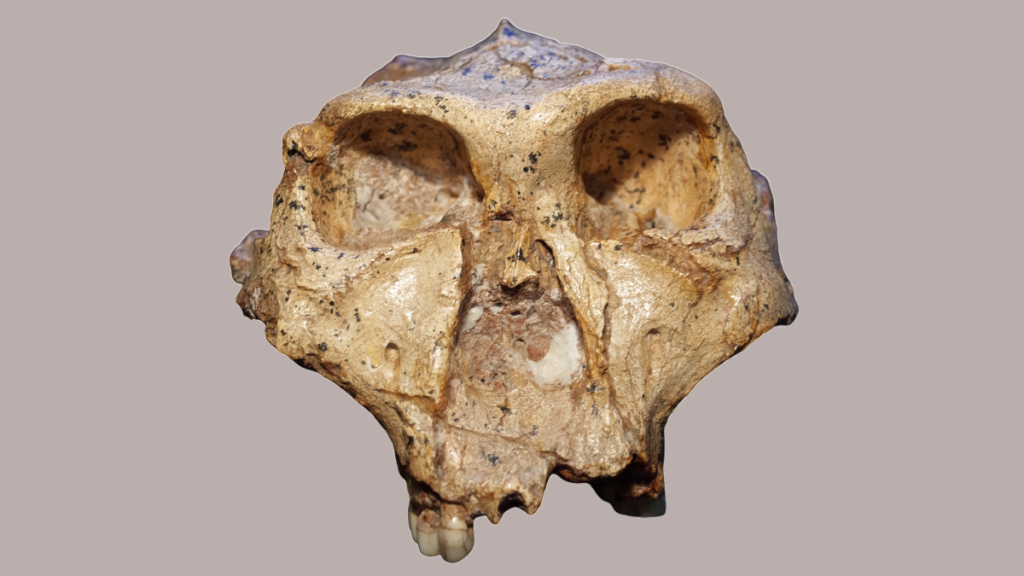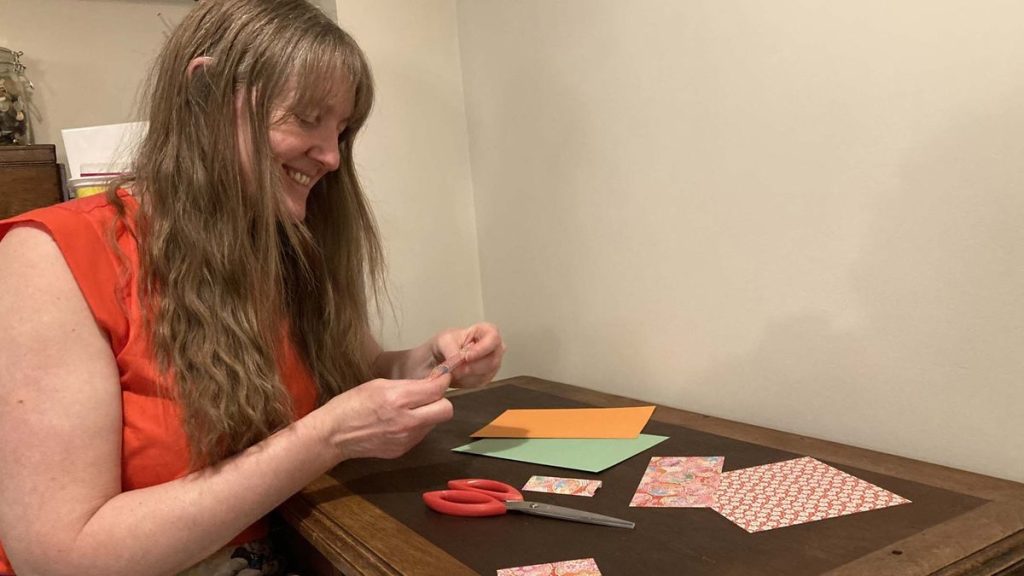Now Reading: 200 years ago, tourists flocked to Paris—to see decomposing corpses
-
01
200 years ago, tourists flocked to Paris—to see decomposing corpses
200 years ago, tourists flocked to Paris—to see decomposing corpses

In 1870s Paris, expensive plate glass panes meant one of two things: high-end shopping or public spectacle. At la Morgue de Paris, it meant both.
Inside, the city’s unclaimed dead lay on tilted marble slabs beneath a trickle of water meant to stave off decay. While some still wore the clothes they were found in, most were naked, with only leather loincloths placed over their genitals. Other garments—coats, boots, even umbrellas—were hung above or beside the body, displayed like clues in a grim shop window. If a corpse had decomposed too far, attendants would swap in a wax replica to keep the body presentable for viewing.
Crowds gathered daily at the giant glass façade. Vendors hawked oranges and waffles to the waiting. Tourists consulted guidebooks listing the morgue alongside Notre Dame. Families brought children. Parisians came not to grieve— but to gawk.
The morgue had been intended as a forensic tool to help identify the city’s unknown dead. Instead, it became Paris’s most macabre attraction.
“One of the journalists said when [the Paris Morgue] closed in 1907 that it was the first free theater for the people,” says Vanessa Schwartz, an art history professor and director of the Visual Studies Research Institute at the University of Southern California. But it was also a site of real forensic innovation.
Today, cold cases unfold like mini thrillers on TikTok, and true crime dominates podcast charts. But 150 years ago, Parisians didn’t need algorithms to turn death into entertainment. They had the world’s first public morgue—a civic experiment in identification that accidentally revealed how eagerly we turn tragedy into a show.

Visiting the Paris Morgue was a daily ritual for many Parisians, as seen in this 1886 engraving of crowds outside the building.
Illustration by Photo Josse, Bridgeman Images

Writers, artists, and the public alike were drawn to the Paris Morgue. This illustration of visitors appeared in Victor Hugo’s novel Hans of Iceland.
Photograph by Prismatic Pictures/Bridgeman Images

By the late 19th century, the Paris Morgue was a must-see for tourists as well as locals. This illustration from Mark Twain’s The Innocents Abroad captures one such visit.
Photograph by Look and Learn/Bridgeman Images
How Paris built the world’s first public morgue
Paris didn’t set out to create one of the world’s strangest attractions. It began with a practical problem: how to manage the unknown dead.
As the city’s population surged in the early 1800s—surpassing half a million and growing fast—an unsettling pattern emerged: people were dying anonymously. Bodies pulled from the Seine or found in alleyways often went unidentified. With no system in place to alert the public or locate next of kin, the city had no way to bridge the gap between its living and its dead.
“The idea that you could die and your body could go unclaimed,” says Catriona Byers, historian and author of the forthcoming MORGUE. “That was a modern problem.”
To address this, the city opened its first morgue in 1804. It was a modest, utilitarian structure attached to the Prefecture of Police. It wasn’t designed for showcase but for function, an urban tool that allowed the public to identify the unknown dead.
But as the city changed, so did the morgue.
Paris was being remade as a stage, with wide boulevards, grand façades, and new metropolitan monuments meant to showcase the state’s power and modernity. “It was part of post-Haussmann Paris,” says Schwartz.
In 1864, the morgue moved to a new home behind Notre Dame on the Île de la Cité. Surrounded by flowing foot traffic and clear lines of sight from the street, the building seemed designed to catch the eye. Its expensive glass front, slabs angled toward the windows, and the steady trickle of water over the bodies turned a municipal function into something closer to display.
These were not accidental design choices. The morgue’s layout mirrored the logic of Haussmannization: orderly, accessible, and built for visibility. It was a place to civilize death and, in the process, made it irresistibly watchable.

An 1874 illustration from Harper’s Weekly called “The Morgue at Paris: The Last Scene of a Tragedy” captures the morgue’s reputation as one of the city’s strangest tourist attractions.
Photograph by Corbis/Getty Images
An unlikely stage for true crime obsession
By the 1860s, something had changed. Parisians weren’t just visiting the morgue; they were becoming fans.
You May Also Like
Part of that shift came from the press. As illustrated papers gained steam, so did sensational coverage of the morgue’s more mysterious cases. Visitors weren’t just coming to look but also following narratives and returning to see how a story might end.
The newly popular petite presse—France’s version of the penny press—fed the obsession with lurid headlines, breathless speculation, and artist renderings of corpses. As Byers explains, people could follow cases from initial newspaper reports to morgue visits to eventual trials. It was an early form of serialized true crime consumption.
Certain corpses drew particular attention. Young women found under unclear or compromising circumstances became public obsessions. “The idea was that women were meant to be in private spaces,” says Schwartz. But their presence in the morgue exposed them, signifying the “breakdown of the domestic order.
Technology only intensified the obsession. Plate glass offered uninterrupted viewing. Refrigeration extended display time. Wax masks covered decomposition. Each innovation allowed the public to linger a little longer, gazing past the glass, across the chilled marble, and sometimes at faces sculpted in wax.
And look they did. By the late 19th century, the morgue drew more daily visitors than the Louvre and four times as many as the Eiffel Tower.
Even literary giants weren’t immune. Charles Dickens went to the morgue multiple times, including once on Christmas Day. But it was Émile Zola who saw it most clearly. In his 1867 novella Thérèse Raquin, he used the morgue not as a gothic backdrop but as commentary on a society obsessed with spectacle.
“Zola didn’t pretend to be above it,” says Schwartz. “He understood what the morgue revealed about the crowd.”

In this 1834 oil painting, artist Louis-Alexandre Péron depicts the nighttime transport of unclaimed corpses from the Paris Morgue.
Photograph by PWB Images/Alamy Stock Photo
How the Paris Morgue reshaped global forensic science
By the 1880s, cities around the world were adopting their own versions of the Paris Morgue. “[The Paris Morgue] was incredibly influential,” says Byers. New York copied the model wholesale. San Francisco followed. So did Rome, Berlin, Lisbon, Melbourne, and Bucharest.
But the real export wasn’t just architecture—it was expertise. Paris had become the global hub for forensic medicine and modern policing techniques. Medical examiners trained there before returning home to establish similar systems. Police departments studied Parisian techniques for corpse identification and crime scene protocols.
A legacy that lingers
The Paris Morgue closed in 1907. Public tastes had shifted as reformers lobbied for more privacy in death. A new facility opened quietly across town—without glass, without crowds.
But the appetite for watching didn’t disappear. That same year, Paris saw the rise of permanent movie houses. As Schwartz notes, this timing was “more than a coincidence.” The desire for realist spectacle found a new medium.
If anything, the morgue had helped invent a new visual language: one that blurred the line between public duty and private fascination. It was a public space that invited people to stare, to guess, to theorize. And it worked. People came, again and again, not just to identify the dead but to watch the story unfold.
“The morgue reveals the strange intimacy between civic duty and voyeurism,” Byers says. “And it still haunts how we consume death today.”























